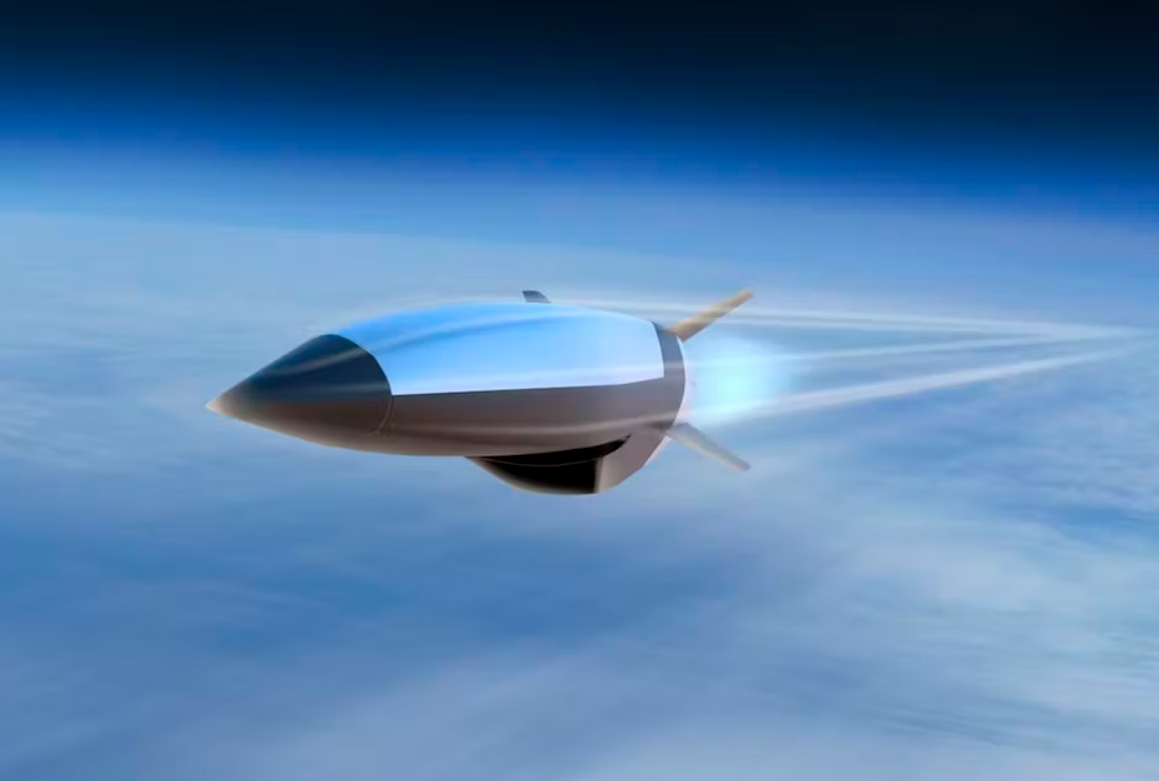Las empresas Raytheon y Northrop Grumman trabajan con la US Air Force en el desarrollo de un Misil de Crucero Hipersónico, propulsado por un motor del tipo Scramjet, para su lanzamiento desde aeronaves de combate de última generación operados por esa fuerza. Este sistema denominado HACM (Hypersonic Attack Cruisse Missile), ha recibido una asignación de US$ 985 Millones para el diseño y desarrollo de los prototipos requeridos en las distintas etapas del programa. Los sistemas hipersónicos, al desarrollar velocidades superiores a MACH 5 y tener gran maniobrabilidad, se encuentran expuestos a exigencias aerodinámicas y termomecánicas extremas, tales como shock, vibraciones, muy altas temperaturas y presiones , que afectan no solo los componentes estructurales de la plataforma, sino principalmente sus sistemas electrónicos de guiado, navegación y conectividad con sus elementos de comando y plataforma de lanzamiento.
EGLIN AIR FORCE BASE, Fla. – U.S. Air Force guided missile experts are asking a team of Raytheon Technologies Corp. and Northrop Grumman Corp. to develop one of the first hypersonic cruise missiles to be in the U.S. inventory.
Officials of the Air Force Life Cycle Management Center’s Armament Directorate at Eglin Air Force Base, Fla., announced a $985.3 million task order Thursday to the Raytheon Missiles & Defense segment in Tucson, Ariz., to design and develop the Hypersonic Attack Cruise Missile (HACM).
This air-launched hypersonic cruise missile, which initially will be carried on the jet fighter-bomber aircraft like the Boeing F-15EX and F-15E Strike Eagle aircraft, is a scramjet-powered hypersonic weapon designed to hold high-value targets at risk in contested environments from standoff distances, Air Force officials.
Hypersonic munitions fly through the air at speeds of at least Mach 5, which is 3,836 miles per hour. Some hypersonic munitions under development are expected to fly much faster. Raytheon and the Northrop Grumman Defense Systems segment in McLean, Va., will deliver operationally ready HACM hypersonic cruise missiles to the Air Force.
The hypersonic operating environment involves heavy exposure to shock, vibration, heat, and thermal shock, so its guidance and navigation technologies must be specially hardened to withstand such severe operating conditions.
The task order calls for Raytheon and Northrop Grumman to use model-based critical design review, qualification, integration, manufacturing and testing in developing and deploying the HACM hypersonic cruise missile.
The Hypersonic Attack Cruise Missile will have scramjet engines, which use high vehicle speed to compress incoming air forcibly before combustion, which enables sustained flight at hypersonic speeds.
By traveling at these speeds, hypersonic weapons like HACM can reach their targets more quickly than similar traditional missiles, and potentially evade air defenses.
Raytheon and Northrop Grumman have worked together since 2019 to develop, produce, and integrate Northrop Grumman’s scramjet engines onto Raytheon’s air-breathing hypersonic weapons.
In 2020, the U.S. Air Force joined Australia in a multi-year project called the Southern Cross Integrated Flight Research Experiment (SCIFiRE) to develop air-breathing hypersonic cruise missile prototypes.
The Air Force awarded three 15-month SCIFiRE contracts in June 2021 to Boeing Co., Lockheed Martin Corp., and Raytheon to complete preliminary designs of a hypersonic cruise missile.
The HACM program will bring the Raytheon SCIFiRE prototype design into production for fighter aircraft integration, and deliver two leave-behind assets with operational utility.
Through SCIFiRE, the U.S. and Australia will continue collaborating on HACM design and development, including using Australian test sites for the initial all-up-round flight tests. The Air Force plans to deliver a HACM capability with operational utility by 2027.
On this task order Raytheon will do the work in Tucson, Ariz., and should be finished by March 2027. For more information contact Raytheon Missiles & Defense online at www.raytheonmissilesanddefense.com, Northrop Grumman Defense Systems at www.northropgrumman.com, or the Air Force Life Cycle Management Center at www.aflcmc.af.mil.


